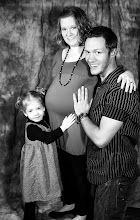Getting home water filters is no longer a luxury for the wealthy, or for the overly paranoid health nut either. It's well-documented that tap water can contain a long list of potential contaminants, not to mention the deliberate addition of chlorine and fluoride to water treatment systems. Having a whole house system, or even just a basic undersink water filter in the kitchen or bathroom is now becoming the norm.
If you are thinking about getting one, you might want to know a bit more about how they work and what they can actually do. The catch is that not all filter systems operate the same way, and there are different filtering technologies that are used in various models of home filters.
Mechanical Filters
This is the basic type of filter, and nearly every home system will have a mechanical filter involved. All that means is a fine mesh cartridge that physically filters out larger particles. That will usually include sediment, rust, scale fragments and some larger microbes. While helpful in cases where water tends to be dirty, this is only a rudimentary level of filtration that should be paired with one of the other formats. Chemicals, toxins, or dissolved minerals will all be unaffected by the usual mechanical filter methods.
Chemical Filters
Carbon or charcoal blocks can add a further level of chemical filtration, by neutralizing and binding with dissolved compounds in the water. This is the main component of the inexpensive jug filters, and it's a good option if you want to remove chlorine from city water. It will also remove a few other chemicals such as benzene and some varieties of pesticides or herbicides. Microorganisms, minerals and heavy metals will not be removed with a carbon filter.
UV Light
Now we're getting into more complex filtering technology and what you would find on large whole-house systems. Ultra-violet light is perfect for killing anything and everything that is living in your water. So any bacteria, parasites or other water-borne microbes will all be eliminated. This is an ideal option for well water that is likely to be contaminated with organic life rather than chemical.
Reverse Osmosis
At this point, you're investing in a large sophisticated system intended to process the water for the entire house. The process of reverse osmosis will force water through a membrane at an atomic level, removing virtually everything. That includes all forms of organic and chemical compounds, leaving you with the purest water you can create from a filtration system.
How They Work
In general, water is diverted to run through one of these types of systems before use. Smaller units (the first two mentioned) can be installed at individual sinks if you only want to treat water at one point in the house, sometimes even attaching right to the end of the faucet. The second two are placed at the main water su ly, so that all water in the house is treated immediately before piped to various rooms.

Comments